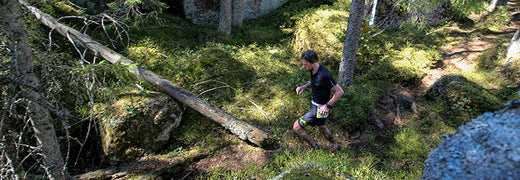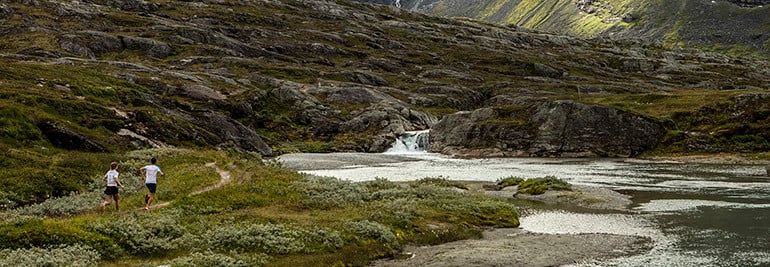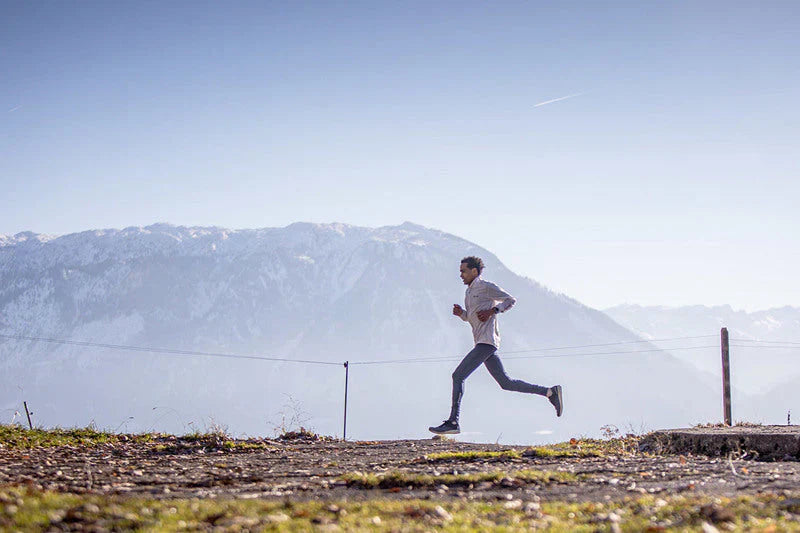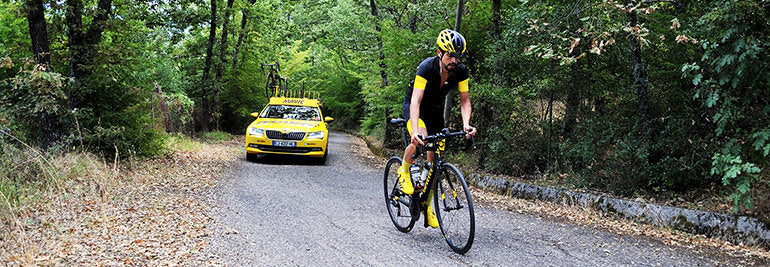

Suunto Blog

Congratulations to the Suunto Summit 2018 selections!
The 2018 Suunto Summiteers are:
Aniol, Spain
Daniel, Switzerland / Spain
Dmytro, Ukraine
Julia, Finland
Leonardo, Italy
Maggie, UK
Patrick, France
Patrik, Slovakia
Sherry, USA
Tara, USA
Teoh, Malaysia
Valentin, Romania
Verónica, Ecuador
(All participants have been individually contacted by Suunto.)
Welcome to #suuntosummit, everyone!
***** 5 February 2018 *****
Suunto Summit 2018
Do you want to be a part of a weekend full of trail running in the Finnish forest, workshops on Suunto products, and a little sauna too? If you can get to Helsinki for 4-6.5, we’ll do the rest!If this sounds like your kind of weekend, fill in the application below and tell us why you’re passionate about sports and Suunto, and share your story with #suuntosummit
Applications are due by 22.2.2018. (Amer Sports employees are not eligible for this Suunto Summit)
APPLY NOW
Here's what the Summit looks like in action!
In 2017 we hosted an inspiring group of 16 Suunto fans from around the world for a weekend of sharing experiences – and some muddy Finnish trails.
Summit team gearing up for the start of the trail race
Serene moment for Sante in the forest
Ready for orienteering?
Summiteers celebrating at the finish of Bodom Trail
All images by Philipp Reiter

Three inspiring stories from Suunto World Vertical Week 2018
Kat Schjei, California, USA
Feeling inspired by @suunto #verticalweek ; in the last seven days I have climbed over 5,000 feet either wearing this adventurous toddler, or pushing him in the stroller. It isn't easy, but I thrive on the challenge and seek more adventures with my sidekick every day. 🗻 #verticalweek #noexcuses #motherrunner #BAMR #BAMRbassador #runitfast #irunhesleeps #saltymountainmamas #getsalty #trailrunner #ultrarunners #trailchix #lasthorse #r4twc #running4thosewhocant #nomeatathlete #ultrarunner
A post shared by Kat Schjei (@smushtush) on Mar 1, 2018 at 6:15pm PST
“I live in Southern California but have lived all over the US. I'm a mom of three small kids and work as a nurse at the children's hospital, but that doesn't stop me from exploring and climbing as much as possible.
I'm currently training for my fourth 100-mile race, the Tahoe Rim Trail 100, which is located on some of my favorite peaks to climb. My Vertical Week was fun! I strapped my youngest son on my back and we climbed around 1500 feet a day, which is a crazy hard strength workout with his added weight. He loves taking in the sights as much as I do, and I know this is great race training because the added weight feels like double the distance.
I'm very much an advocate for getting kids outside; my three have learned to fall in love with the beauty that is rewarded when you put effort into a steep climb. I live my life to lead them and other families by example.”
Anna Persson, Norway
Added 4000m to my vertical weekend today! It felt like 1000 😁 #verticalweek #timetoplay #romsdalen #uterauma #suunto 's #week #mountains #outdoorlife #training #sun #winter
A post shared by Anna Persson (@anna_persson_) on Mar 2, 2018 at 11:23am PST
“I came to Norway 12 years ago. A summer job made me come here and nature has kept me here. The nature of Rauma in Romsdalen, Norway is spectacular with its many high and steep mountains by the sea. The mountains are in my backyard so I can walk to them from my front door.
My favorite training mountain in winter time is 1439-meter-high Kyrkjetaket – and the mountains around it. I often climb it two or three times before I go to work in the afternoon. The same mountain feels different every day. Snow and weather conditions may vary from day to day but when I`m at the top, it’s always the same; magical, wonderful feeling of freedom.
My #verticalweek was pretty hectic because of work. I also caught a cold. Luckily the snow and weather conditions were perfect this week so it was easy for me to do some vertical meters every day.”
Hannes Gehring, Colorado, USA
It’s been nearly 7 months since I’ve raced. Following my last race I found myself fighting demons, questioning and challenging my dreams and pursuits in ultra-running. I ballooned from a race weight of 168 to 206 lbs by mid December. It has been snail-crawl back to fitness but my focus has never been more deliberate. Yesterday’s 24 miles and 7,000 feet of climbing capped the week at 100 miles and 20k of vertical gain and felt like an unleashing of a few months worth of frustration, angst, and doubt. Sometimes following your passion, your crazy, and your heart is the only way to dig out of that hole you’re in. I’ve been digging for a few months. I’m back and there’s a fire 🔥🔥🔥coursing through my veins. (📷 Yesterday circa my 41,288th step 📸captured here by ninja photographer @itsmarincita) #uphillswagger
A post shared by Hannes Gehring (@uphillswagger) on Mar 5, 2018 at 10:46am PST
“Last March I decided to pursue ultra-running full time and moved into my truck with my two rescue dogs. They are the reason I found mountains; once I had rescued my first dog he led me to trails and helped me find my passion in mountain running.
Suunto's Vertical week went great for me. I was fortunate enough to climb over 20,000 vertical feet and cover over 100 miles, including a summit of the 14,035' Mt. Sherman here in Colorado.
I think any climb that gains 4,000 feet or more feels like a really burly climb. Typically, for my big days I aim for over 10,000 feet of uphill climbing. The steeper the better as far as I am concerned!
Ultra-running is my biggest passion (other than my dogs). So, my biggest motivation when a climb gets tough is that I want to do this professionally at the highest level. It keeps me humble and hungry grinding up a steep trail, knowing my dreams are lofty, but attainable – if I just keep pushing up that hill. Plus, my dogs make every climb look like it's a cake walk and that's a humbling motivator as well!”
Congratulations, Kat, Anna and Hannes! Your new Suunto Spartan Sport Wrist HR Baro watches are on their way to you.
And a big thank you to everyone who participated in Suunto World Vertical Week and shared photos and stories. Happy adventures to you all – both in the ups and downs!
LEARN MORE ABOUT SUUNTO WORLD VERTICAL WEEK 2018
Vertical Week 2018
Now is the time to celebrate both the suffering and the flying. Welcome to the third annual Vertical Week!
Vertical Week 2018 starts on Monday, February 26 and ends on Sunday, March 4. Put on your running shoes, hop on your bike or release your heels and start skinning up the hill.
Track your adventures with your Suunto watch, sync with Suunto App, and by the end of the week we’ll know which country climbs the most in a week.
Every move counts!
Share your Vertical Week experiences on Instagram or Facebook with #VerticalWeek. Three of the most inspiring posts will win Suunto Spartan Sport Wrist HR Baro watches.
Terms and conditions apply. Read them here.

Figure out your training zones and supercharge your fitness
Key components to improve your fitness are frequency, duration and intensity. Frequency and duration are easy to understand, but training intensity is a bit more tricky. How hard is hard? And why should I care? Read on to learn about intensity zones and about defining them.
That Janne Kallio works at Suunto on new product and solution concepts shouldn’t surprise anyone – after all, triathlon is his passion. Neither are we surprised that his book (Treenaa tehokkaasti, currently only available in Finnish) can help you learn to how to use technology to improve your endurance results. But the most surprising thing? Using training zones is easy. “Training does not need to be complicated,” says Kallio.
“The key aspect of reaching progress in one’s fitness is the ability to increase the physical load over longer period of time. Research shows that for people who are only starting to train, the easiest way to progress is to simply add one more training session in the week. Running three times a week versus two will improve fitness.”
But after a certain limit, simply running more is not enough.
“Running speed increases quite linearly on all distances up to about 60–70 km per week. After that the correlation isn’t as strong. When training more than 100 km a week your running speed does not necessarily get any faster.”
What Kallio is explaining is that adding volume to your training only helps up to a certain point. After that getting faster requires focus on other things, like the correct distribution of training intensity.
“Quite common training model is the so called polarized model where a big chunk, i.e. 80 % of training, is done aerobically, and a small portion of training with high-intensity. In order to follow this type of model one needs to be aware of one’s intensity levels.”
But what does intensity actually mean?
Training on different intensities stresses your body in different ways and leads to different kind of physiological adaptation. During light or moderate efforts the energy is supplied by the oxidative system, burning fat and carbs, and your blood lactate levels remain the same as at rest (0,8–1,5 mmol/L).
As the intensity increases, lactic acid starts to build in your muscles. Your body is still able to flush it out but the lactate levels rise above your resting levels. In training terminology this is your aerobic threshold (usually marked at 1,5–2,0 mmol/L).
If the intensity of the exercise intensifies even further, at some point your cardiovascular system can’t supply your muscles with enough oxygen, and lactic acid starts to build in your muscles faster than it can be removed. This point is called your anaerobic threshold (usually at around 4,0 mmol/L).
Based on these values, five zones are defined. Zones 1 and 2 are below aerobic threshold. Zones 3 and 4 between aerobic and anaerobic thresholds. Zone 5 is above your aerobic threshold. (Some of the zone-based models split zone 5 to fit dedicated sprint / explosive training into this intensity.)
Zone 1 is for recovery and warm-ups/cool-downs, zone 2 for long endurance sessions, zone 3 for tempo work, zone 4 for high-intensity intervals and zone 5 for maximal, VO2 max efforts.
The intensity zones are commonly defined based on heart rate, running pace or cycling power. Depending of the personal preference, type of training and equipment available one can use any of these models in their training.
How to define your personal heart rate zones?
It is important to know your zones to be able to follow a training plan and to keep structure in your training. “Without this knowledge easy runs often become too hard and hard ones are not hard enough. Zones help you understand and commit to what you are supposed to do,” Janne Kallio says.
There are basically three ways to define your heart rate zones: an estimate based on your max heart rate, a field test and a lab test.
Says Janne: “Statistically an estimate based on your max heart rate is valid, but as we know, individual differences are large especially in anaerobic threshold. The first challenge is the estimation of maximum heart rate and then the percentage of this to set the right level for anaerobic threshold. The percentage is an estimation as well.”
“The estimation of maximal heart rate is a good starting point. After some really hard workouts it’s definitely good to update your maximum heart rate based on personal experience. But for a goal oriented athlete, more accurate values are needed.”
The best way to get to know your personal HR zones is to take a VO2 max test with blood lactate analyses at a lab. But that is not necessary for every athlete. You can get a good idea of your personal intensity zones with a fairly straight-forward field test: After a good warm-up, run a 30-minute, race-pace effort. 10 minutes into the test hit the lap button on your Suunto. After the test use the average heart rate of the 20-minute lap as your anaerobic threshold.
Run hard the entire half an hour, but don’t start out too hard. After doing this test a few times you will learn to pace it better.
“After you have got your anaerobic threshold, it is time to make some calculations. There is some published research done on where the aerobic level fits based on anaerobic threshold,” says Janne. “It’s good to understand that an accurate anaerobic threshold is the basis of good zone distribution.”
Zone 5: Above your anaerobic threshold. Zone 5 ends at your max heart rateZone 4: 94–99 % of your anaerobic threshold. The upper limit of zone 4 is your anaerobic thresholdZone 3: 89-93 % of your anaerobic thresholdZone 2: 83-88 % of your anaerobic threshold. The upper limit of zone 2 is your aerobic thresholdZone 1: <82 % of your anaerobic threshold. Zone 1 starts at your resting heart rate.
Note, these % values are from anaerobic threshold heart rate, not from maximal heart rate.
There are also other zone models that you can use. For example some of the zone models place your anaerobic threshold within zone 4 and in some models zone 1 does not start at rest heart rate but above it at 55 % of maximum heart rate.
Kallio says that’s not really important – it’s about the concept: “What one needs to understand is that the role of the zones is to ensure you train in different intensities.”
Different activities, different intensity zones
“It is also good to know that your heart rate zones differ slightly in different endurance sports. Activities where more muscles are working also require more oxygen meaning your anaerobic threshold is higher in these sports. You will reach your anaerobic threshold earlier in swimming than in cycling, running or cross-country skiing – in this order,” Janne reminds us. “So if you are, let’s say, a cyclist and a runner, you should test and define your zones for each of the sports to target your training intensities correctly.”
It’s just one example of how a little knowledge can help out a lot – a whole lot.
LEARN HOW TO USE SUUNTO VERTICAL'S INTENSITY ZONES
Main image © Philipp Reiter

Not far from home
Follow along Erkki Punttila on a bike packing trip way up north, north of the Arctic Circle, in Lemmenjoki National Park. Sometimes the best way to find yourself is to get lost in the beauty of nature.
Eki Punttila rode his Kona Unit X across the national park.
Erkki has an appetite for adventure – and a Suunto Spartan Sport Wrist HR Baro to guide his way.
And read more about the bike trip at konaworld.com
Photos by Jaakko Posti / Kona Bikes

During a 3,380km ride you don’t know what will hurt the most
When Omar di Felice planned his little bike ride around Italy, he knew a lot of it would not be easy. After all, he planned to barely sleep while pedaling over 3,000km, leaving clockwise from Rome, and returned just over a week later. Of course, a trip like this takes meticulous planning – every road, every hill, every kilometer.
So that’s why the surprise was a surprise: “The toughest part was the south of Italy. I didn’t know the route very well, and I found tough, short climbs and hard asphalt! It was a real surprise considering the fact that the toughest part in my idea would be the Alps segment of my race.”
After a rough start, Sicily and Sardinia were easy going – “Peaceful landscapes, hills, and perfect weather,” says Omar. “Seeing the dawn from the top of Etna mountain was on of my favourite moments.” In Genoa, he found a welcome surprise: crowds from his hometown out to greet him and show their support – including the mother of Marco Pantani, a legend of Italian cycling.
Over the eight days, di Felice used three different bikes – a Wilier 110 Air – an aero bike to push fast during the flat parts – a Wilier 110 NDR with disc brakes systems for comfortable riding, and a Wilier Zero.6 for minimal weight during the toughest climbs. The funniest bit? In 3380km, he didn’t have a single flat.
Omar’s sleep schedule was extremely sporadic – he’d grab about grab about an hour a and half of sleep every 15 hours, in addition to other short breaks, before a luxurious three-hour nap before his last push to the finish. But this unrelenting regime allowed him to complete the massive ride in just 8 days and 21 hours. Since the route was one of his own choosing, it’s unquestionably a world record for that particular route, but hard to place in the canon world cycling records, where others have gone further in less time – albeit with significantly less climbing than di Felice.
The end was the most glorious: “The last two days were the best part of my ride,” says Omar. “I felt great, and really happy that everything had gone well until that moment, and I really enjoyed the route back to the finish line.” He enjoyed it so much he’s already planning the next one. “Of course it was really tough and now I need a long rest period but I’m sure I will do something similar in the future. Why not!”














































































